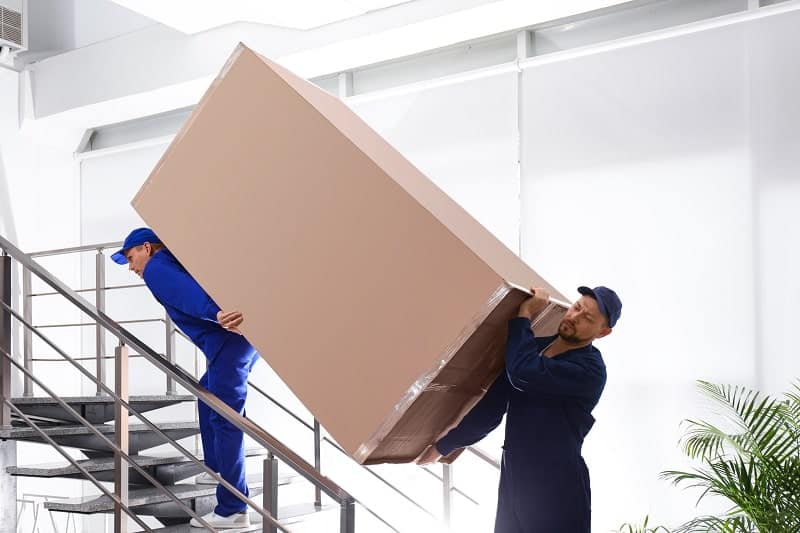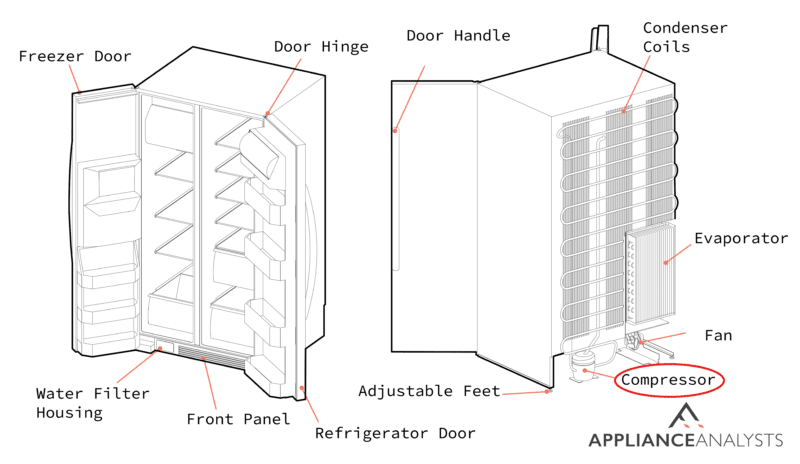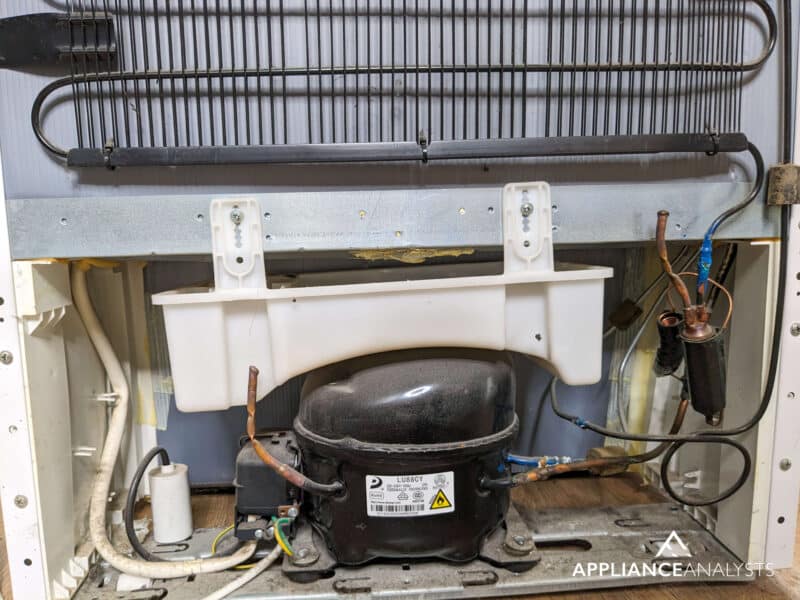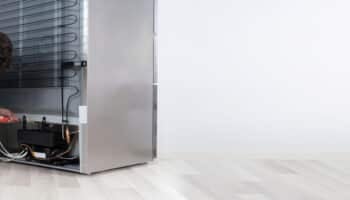We've independently reviewed this article to make sure it's as accurate as we can make it.
To find out more about our article creation and review process, check out our editorial guidelines.
Did you just get a new refrigerator delivered to your house? Perhaps you recently moved and decided to bring your current fridge, only to suddenly realize it’s no longer working?
Having your fridge stop working after a move isn’t uncommon. Sometimes, refrigerators don’t work right after a move, which sucks because you normally want to start using them immediately.
So what do you do if your fridge isn’t working after moving? Below you’ll get explanations of why your fridge isn’t working and what you can do about it.
Ready? Let’s dive in!
Why trust us? This article was written by Craig Anderson and Andy Fulenchek.
Craig has helped thousands of other homeowners repair their appliances since 2016.
Andy is one of our resident appliance repair experts with over a decade of experience. He currently runs his appliance repair company with a team of trusted technicians.
What Position Was the Fridge Stored or Transported In?
From what I’ve seen over the years, if your fridge is not working after moving, there’s a good chance it was either stored on it’s side or transported incorrectly. When transporting a refrigerator, it should be done in a vertical position.
Especially if the fridge is being delivered professionally.
When the delivery arrives at your home, be sure to inspect the position of the fridge in the truck before having it moved into your home. Please make a note of whether the fridge is vertical or on its side. I strongly advise taking pictures as evidence in case something goes wrong.

If the fridge is upside-down, reject it, and contact the seller.
According to Removals and Storage experts, storing a fridge on its side or back during a move can cause compressor oil to flow into the cooling lines—leading to problems once it’s plugged in. Their guide on how to store a fridge shares what to do before, during, and after moving to avoid damage.
The Fridge Is in the Kitchen. Now What?
The big key to avoiding a fridge that’s not working after moving is understanding that a lot of stuff is vibrating and moving about during the process – including compressor oil.
Your fridge has oils, gasses, and refrigerant liquids that need time to settle and return where they belong after being transported.
I’ve found that a safe waiting period between having the fridge delivered to your kitchen and using it is about 4 hours. However, if the refrigerator was moved on its side and you want to play it safe, waiting 24 hours is my recommendation. The waiting period will give oils, gasses, and liquids time to return to their place.
When a fridge is moved on its side, it puts more stress on the compressor than if it’s moved in a vertical position. Not to mention that compressor oil may leak into the coolant lines during horizontal movement.

Before firing up the fridge, it’s important to give it time for the oil to drain from the coolant lines and back into the compressor.
The Fridge Won’t Cool
If your fridge is still not working after a move and it won’t cool, ask yourself the following:
Does the fridge have power?
If so, and the move was recent, you may be able to fix the issue by unplugging the fridge and leaving it alone for 24-48 hours.
Provided the waiting period has passed, and your fridge is still not cooling, you’ll need to get the compressor inspected. A bad compressor requires a repair or total replacement, so please get in touch with a technician you trust for recommendations.

The refrigerator could have also set itself into demo or vacation mode – you should be able to check this via the display or in the owner’s manual.
The Fridge Was Allowed to Settle but Still Won’t Start
If your fridge is not working after moving and allowing it to set, you’re not out of options yet.
Does the fridge have power? Check the outlet the fridge is plugged into and ensure there’s enough electricity to power it. Sometimes outlets go bad due to faulty wiring, a ground loop, or just an old outlet that can’t handle a refrigerator’s load.
You should also check the circuit breaker and see whether it’s been tripped to the “OFF” position.
The Fridge Still Won’t Work
If your fridge is not working after moving, other issues might have arisen during transportation.
Provided no compressor oil leaks are present, my usual advice is to consider loose wires, damaged condenser coils, bent panels, and even punctures.
When a fridge is transported incorrectly or not secured firmly, bumps in the road can cause all kinds of damage to it. When the appliance is delivered to your home, take some time to check that nothing’s bent out of shape and that the coils look normal.
If you suspect wiring issues are present and you’re unsure how to test them, please get in touch with a professional and have them take a look. Especially if the compressor seems suspicious.
Getting Your Fridge Working After a Move
Getting your new refrigerator delivered is exciting, but it can also bring several problems. It’s always a good idea to check how the fridge was transported to avoid warranty claims in the future.
Remember to try your best to transport your fridge upright to avoid compressor oil leaks, punctured coolant lines, and bent panels/coils.
Thanks for reading. If this article was useful, please check out our other resources and free guides below and consider subscribing to our newsletter.
Have a great day!
-Craig.








